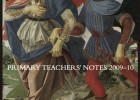Cargando...
Recursos educativos
-
Nivel educativo
-
Competencias
-
Tipología
-
Idioma
-
Tipo de medio
-
Tipo de actividad
-
Destinatarios
-
Tipo de audiencia
-
Creador
-

-

Video game: Electrocardiogram
Tiching explorer Organización
- 3849 visitas
This game explores the key elements of the electrocardiogram, from how and where to place the electrodes (practicing body parts) to how to analyze the mountains and valleys in the ECG curve. We have to…
-

Painting: Tobias and the Angel, 1470-80
Tiching explorer Organización
- 3914 visitas
In this lesson students are asked to describe the painting, paying attention to colours, layout, costumes, animals, biblical characters, body language and posture, etc... The worksheet offers some…
-

Video: Brass shakles, long neck women
Esl video Organización
- 4025 visitas
This 4 minute video by National Geographic shows women from the Paduang tribe. They wear brass coils to make their neck longer and shakles on their limbs. This tribe was persecuted in Burma and they…
-

Correct. Bones
EduBook Organización
- 2505 visitas
Correct the underlined words in this text. Write the correct words in the space: Bones are the softest parts of the body. They are made of cartilage tissue which contains lots of blood vessels . Bones…
-

Vocabulary - Exit Test
EduBook Organización
- 2395 visitas
Read the descriptions. What is the word for each? The first letter is already there. There is one space for each other letter in the word. Dorothy blows one of these W The Tin Woodman wants one H The…
-

Video: Metabolic Process Location
Tiching explorer Organización
- 3466 visitas
This interactive exercise focuses on how different organs and tissues are specialized in certain aspects of catabolism, anabolism, biosynthesis and regulation. In the first activity, when we select an…
-

-

Temperature and insect growth
EduBook Organización
- 2399 visitas
The body temperature of an insect varies according to the temperature of its surroundings. This is why insects grow more quickly in summer and more slowly in autumn and winter. Each species has its own…
-

Te estamos redirigiendo a la ficha del libro...











